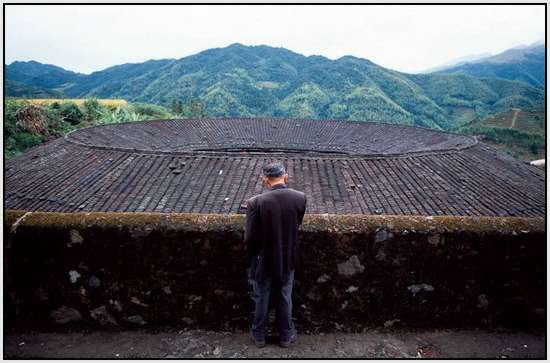
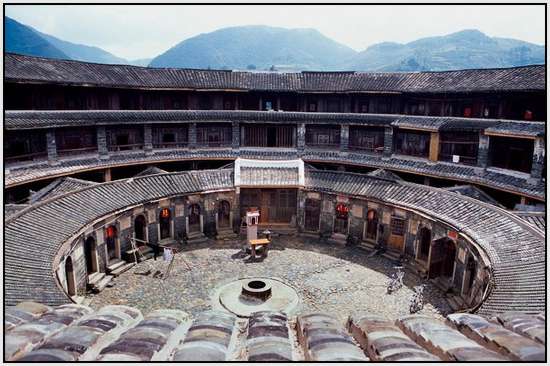
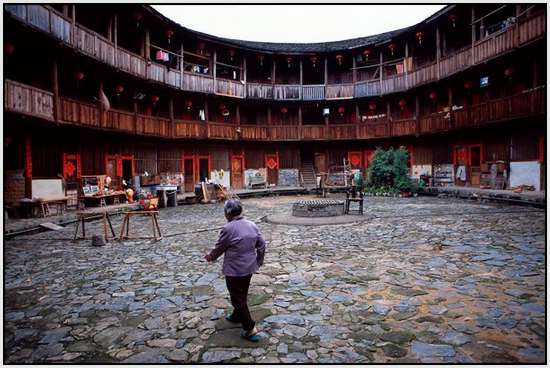
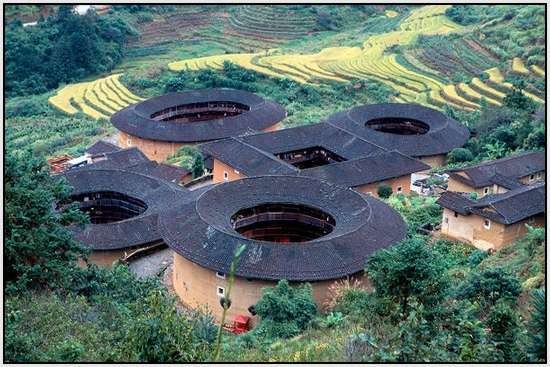
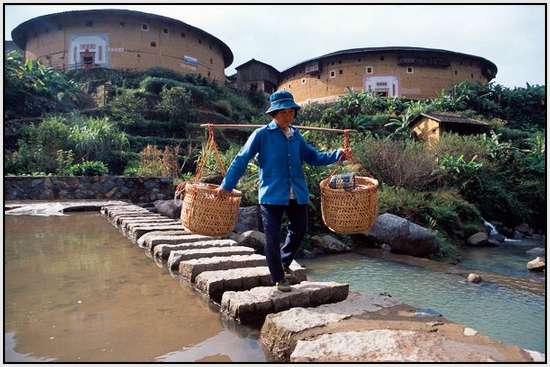
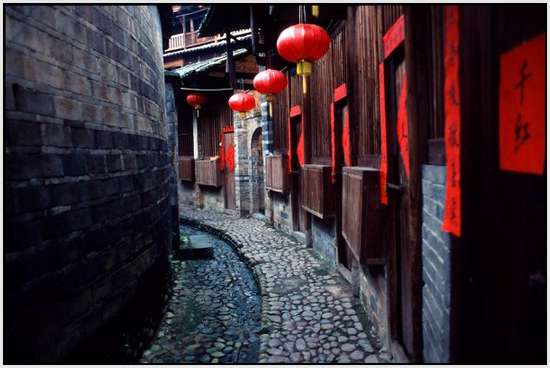
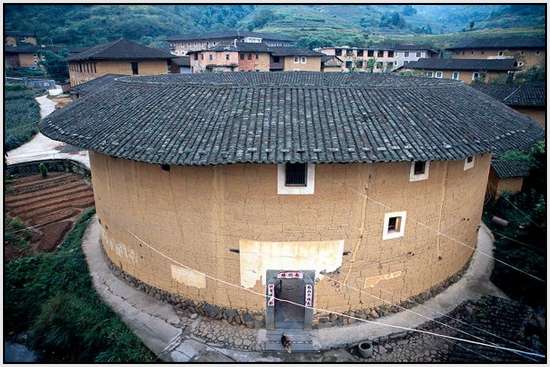
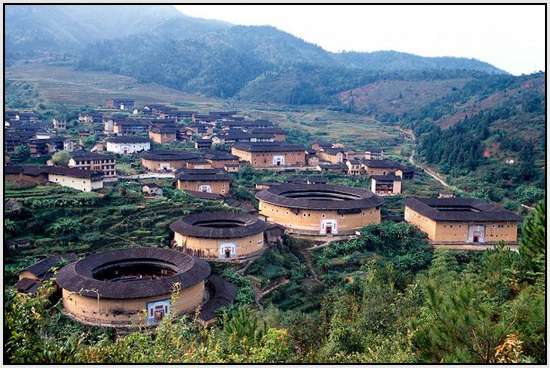
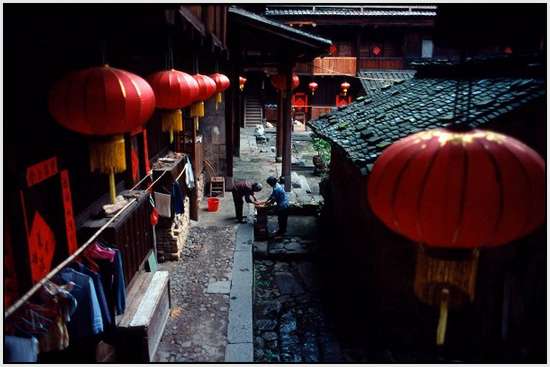
In 2008, UNESCO dubbed China’s Hakka Houses as an official World Heritage Site, noting the historic, cultural and architectural value of these amazing structures. Constructed from the 12th century up through the 20th, these buildings housed up to 800 people each, a city within a city that provided it’s inhabitants with safety, shelter and community. Also known as Fujian Tulou, there are 20,000 of these structures across the Fujian province of China, a large section of coastal China across the sea from Taiwan.
The Fujian Tolou are an important part of this province’s history, as these buildings were designed to protect their inhabitants from roaming bandits and warlords. The typical tulou is a three to five story structure comprised of a thick earthen wall (up to six feet thick in most cases) with a single entrance that was protected by a 4″ thick solid wooden door and an iron gate. At the roof level, the tulou were dotted with gun holes to ward off attacking intruders.
Aesthetically, these buildings capture the spirit and beauty of rural China. Their occupants share a sense of community and hard work for the greater good, where the tasks of daily life are managed collectively, not alone. Visually, these structures are decidedly Chinese in nature, with clay tiled roofs, wooden framing, stone walkways and earthen walls.






